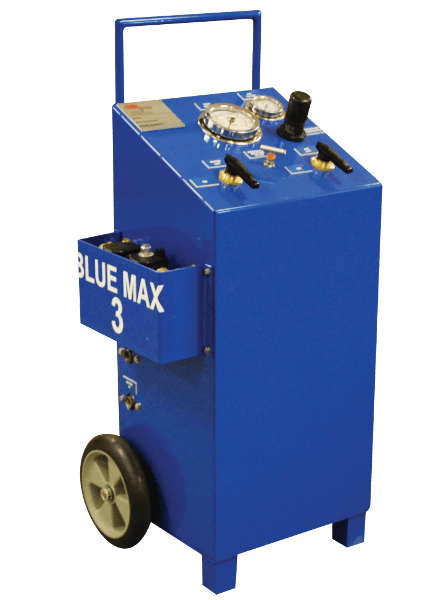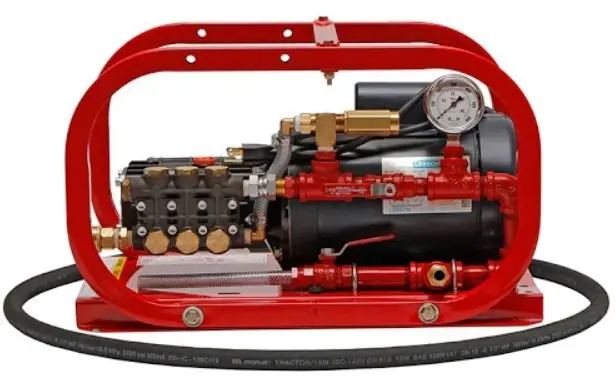How to Use a Hydro Test Pump for Effective Pipeline Testing
Published on by Phil Lundman in Technology
Hydro test pumps are important equipment used for testing the efficiency of pipelines. Thus, they function by exerting pressure on water in order to during determine presence of any leaks and weaknesses. These pumps can be found in a variety of dimensions and outputs in accordance with the different pipe specifications and pressures.
Pipeline testing is critical to maintaining system integrity and safety. Regular testing detects potential issues before they become severe problems, avoiding costly repairs and system failures. Using hydro test pumps to test pipes ensures reliable performance while also maintaining the safety and efficiency of your pipeline systems.
What are Hydro Test Pumps and their types?
Hydro test pumps are specialized tools that are used for testing the strength and integrity of pipes as well as other systems under pressure. They simply fill the pipeline with water before pressuring it with the intention of observing any leakage points or defects. The main reason why these machines are important is that they help in avoiding any breakdowns especially during high operational levels of a pipeline.

Types of Hydro Test Pumps
- Manual Hydro Test Pumps: These pumps are operated by hand and are perfect for smaller-scale testing. These pumps are frequently used when electricity or gasoline-powered alternatives are not available.
- Electric Hydro Test Pumps: These electric-powered pumps are ideal for larger or more frequent testing jobs. They provide consistent performance and are efficient at high pressure levels.
- Gasoline-Powered Hydro Test Pumps: These portable pumps are powered by gasoline engines, making them ideal for isolated locations or sites without access to electricity.
- Pneumatic Hydro Test Pumps: These pumps, which operate with compressed air, are used in applications where air-powered tools are preferable.
Every type of hydro test pump is meant to fulfil various requirements as well as operational needs, and this makes the selection of the most appropriate pump critical for testing conditions it will be used on.
Preparation Steps for Effective Pipeline Testing
Inspecting the pipeline
Before beginning the test, carefully check the pipeline to verify it is clean and debris-free. Any blockages or pollutants can reduce test accuracy and potentially damage the pipeline. Make sure that all joints and connections are secure.
Selecting the Right Hydro Test Pump
Choose a hydro test pump that fits the pipeline's pressure and capacity. Consider the following factors:
- Pressure Range: Make sure the pump can handle the highest pressure required for the test.
- Capacity: Choose a pump with a high enough flow rate to fill the pipeline efficiently.
Safety precautions
- Personal Protective Equipment (PPE): Wear suitable PPE, such as safety glasses, gloves, and steel-toed boots, to protect oneself while testing.
- Safety checks : Ensure that all equipment, including the pump and hoses, is in good working order and correctly connected. Before beginning the test, make sure there are no leaks or damage. Ensure that all safety procedures are in place to deal with possible emergencies.
How to set up the Hydro Test Pump

A proper setup is required for an accurate and efficient pipeline test. Follow these steps to verify that your hydro test pump works properly and delivers reliable results.
- Connecting the Equipment - Connect the hoses and fittings to the hydro test pump securely. To avoid problems during testing, ensure that all connections are tight and leak-free.
- Filling the pipeline with water - Fill the pipeline completely with water making sure there are no air pockets. As air can reduce test accuracy and cause problems.
- Prime the Pump - Priming removes air from the pump system. This involves temporarily running the pump to ensure that it runs smoothly and efficiently during the test.
Conducting the Test using Hydro Test Pump
Once your hydro test pump is set up, follow these steps to conduct a complete and effective test.
- Pressurizing the pipeline - Gradually increase the pipeline pressure to the appropriate test level. To prevent system damage, avoid sudden pressure changes.
- Monitor the pressure - Use pressure gauges to keep track of the pressure throughout the test. Make sure that the pressure is constant and consistent.
- Checking for leaks - Visually examine all joints and connections. Look for signs of leaks or seepage, which may indicate a problem that needs to be addressed.
After the Test
Once the test is completed, follow these steps to safely complete the process of hydro test pumps:
- Depressurize the pipeline - Reduce the pressure in the pipeline gradually to avoid abrupt changes that may cause harm.
- Drain the water - Drain the water carefully from the pipeline, making sure to dispose of it appropriately in accordance with local requirements.
- Inspecting the Results - Examine the test results for any faults or leaks discovered throughout the test. Address any issues found to ensure the pipeline's integrity and reliability.
Conclusion
To ensure effective pipeline testing, follow these steps: thoroughly prepare by inspecting the pipeline and selecting the appropriate hydro test pump, correctly set up the pump, pressurize and monitor the test, and depressurize, drain, and inspect the results.
Following right protocols is critical for generating consistent findings and ensuring pipeline integrity. By carefully following these instructions, you can ensure that your pipeline runs securely and efficiently
Taxonomy
- Pumps
- Pumps
1 Comment
-
What is the equation use for calculating maximum allowable water quantity for reinstating pressure for DI pipe , HDPE pipe, PVC pipes etc.